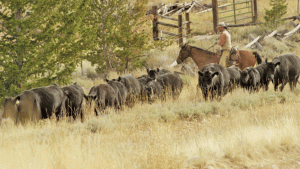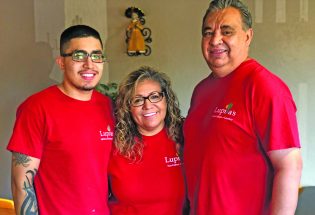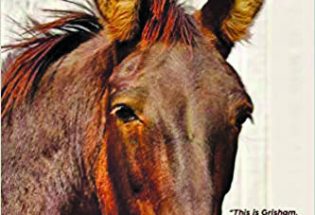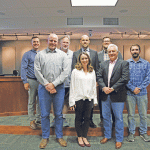Listening to the more-than-human world—part 2

Photo courtesy of Susan Kucera
Matt Barnes herding cattle in the Shoshone National Forest in Wyoming.
By Robin Ferruggia
The Surveyor
It’s exciting! The first wolves have arrived in Colorado.
Children from 67 middle schools throughout the state enjoyed participating in a naming contest held by the Colorado Wolf and Wildlife Center for the first five. The wolves, who were captured in Oregon, were named River, Maverick, Aspen, Shadow and Ghost.
Five more wolves from Oregon were released onto Colorado’s Western Slope shortly afterward.
The wolves are wearing GPS tracking collars and Colorado Parks and Wildlife (CPW) is providing monthly collared wolf activity maps for the public. The map can be accessed online at https://cpw.state.co.us/learn/Pages/Wolves-Activity-Map.aspx
But not everyone is celebrating their presence.
Currently, livestock producers may not kill wolves, who are protected as an endangered species under state and federal law, unless certain requirements are met under the 10 (j) rule of the Endangered Species Act.
But many are finding that non-lethal control methods aren’t working, or if they do work, wolves quickly figure out a way to get past them.
“I think that non-lethal methods are and will be important. But it shouldn’t be framed as a debate between lethal and non-lethal. We will need both,” said Matt Barnes, a rangeland scientist and Coexistence Advisor for the Rocky Mountain Wolf Project. He has helped many livestock producers in the use of non-lethal control methods and other tactics that can prevent conflict between livestock and wolves and other predators.
There are different approaches to non-lethal control methods. Tools, like fladry, can keep predators like wolves away.
“Fladry, or foxlights, around a small pasture are likely to work if the livestock is concentrated in one place and with a surrounding area where there aren’t more livestock,” he said.
“Fladry has been found to work at one time and place for up to about two months. That’s assuming, of course, that there isn’t other fladry nearby. If it were used everywhere, it would probably stop working.”
Tools like fladry also rely on novelty, and wolves’ neophobia (fear of anything new), he said.
Livestock-centric strategies that make livestock less vulnerable or more likely to survive an encounter when it occurs can also be effective.
For example, cattle can be taught to “herd up” and confront an approaching predator instead of running away. Other strategies involve “choice of breeds, breeding for protectiveness, timing of calving, grazing management, livestock handling practices, addition of livestock guardian dogs or other livestock guardian animals,” he said.
“Non-lethal will make lethal controls less common.”
Barnes understands the sense of grief and loss ranchers and farmers feel when wolves kill their livestock and guardian dogs.
Like many who passionately advocate for the reintroduction of wolves into the landscape of the West, he feels a strong sense of grief and loss too.
“I think grief and loss are words that apply to both sides,” he said. “People who identify with their domestic animals, but not wild ones, experience those emotions when a wild animal kills ‘their’ animal. But those people whose circle of concern or identity encompasses the more-than-human world feel that grief all of the time for the loss of native wildlife, and the loss of the integrity of the land, everywhere.”
The conflict is only partly about wolf depredation, he said. “The wolves are the proverbial tip of the iceberg. Debates about them are underlain by social and governance issues, and even deeper cultural issues.”
Barnes and others like him see the “wolf wars” as also about a clash of cultures “mostly between people who identify with the more-than-human world versus those who identify only with the human world,” he said.
“It also depends on what one thinks of as normal. What we have now is not normal, but one extreme: a landscape dominated by humans and livestock, and institutions dominated by special interests.”
A lot of what is considered “normal” is “incredibly destructive,” he said. “When you can identify with nature you can see what humanity has done to the rest of the world.”
We have lost the range of variability that existed prior to the Euro-American arrival on the continent, he said. “Wolf reintroduction will bring back natural predators to a semi-wild human-dominated landscape.”
The presence of wolves can not only improve the ecosystem, but help restore the balance between the more-than-human world where people see themselves as part of nature and animals as “fellow travelers” on the earth, and nature as a “collection of natural resources to be harvested,” he said. We need to balance the “wild” and the “domestic.”
“We don’t need to be all vegan. We need to recognize we are a kind of predator, and that’s part of our role in the world in a wild versus cultivated landscape.”
As human culture evolves and we increasingly see ourselves as part of nature, we can feel empathy for the non-human world, he said.
“The New West has been evolving all along,” he said. “My own view is that this is an inflection point in the evolution of the American landscape and American wildlife policy. We’ve spent the last century both creating a sustainable rangeland livestock culture and restoring wildlife populations. Those two trends have brought us to this moment, when elk, deer and wild turkeys have been restored, and the species that haven’t been restored are the handful that most directly compete with humans and livestock.
“The West will still have ranching but it will change. The importance of hunting is going down. The relative importance of things is changing. Ranching will become more resilient in the face of potential predators. Human tolerance will determine how many wolves can be here, and how we perceive the more-than-human world. Much of it is public land. That makes the West what it is. It’s that working wilderness, wild and domestic at the same time, in our hearts and minds.”
Next in the series: “But what is in the best interests of the wolves themselves?” An interview with bioethicist Dr. Jessica Pierce
- June, 25 2020

Lupita's Mexican Restaurant ̵...
Photo by Dan KarpielLupitas Mexican Restaurant owners Martina (center) and Ernesto Becerra and their son-in-law...
- January, 19 2017

Town administrator to retire in November
By Rudy Hemmann The Surveyor During an interview the morning of Jan. 12, Town Administrator...
- June, 01 2018

Thompson School District closes two s...
By Amber McIver-Traywick The Surveyor Thompson School District Board of Education officially made the decision...
- February, 19 2021

Debut novel by local author blends fa...
Tom McCaffrey likes to tell people he’s in the witness protection program and some people...
- December, 09 2021

Health officials urge residents to se...
The Larimer County Department of Health and Environment (LCDHE) urges residents who have symptoms of...
- January, 31 2020

No second reading needed for recreati...
By Rudy Hemmann The Surveyor A recreation center in Waggener Farm Park is closer to...

Unified basketball comes to Turner Middle School
Community News

Mike Grace says goodbye as Brett Wing joins town board
Community News
POLICEBLOTTER
Community News
Northern Water sets C-BT quota at 70% for 2024
Community News

Emotions run high during Revere Property hearing
Community News
Snowpack at 119% above normal
Community News

Karspeck to serve third term as Berthoud mayor
Community News
COMMUNITY CALENDAR:
Community Calendar – add an event
Homestead Fine Art Gallery First Fridays OPEN HOUSE
03 May 4:00 PM - 7:00 PM
Homestead Fine Art Gallery First Fridays OPEN HOUSE
07 Jun 4:00 PM - 7:00 PM
Homestead Fine Art Gallery First Fridays OPEN HOUSE
05 Jul 4:00 PM - 7:00 PM
Homestead Fine Art Gallery First Fridays OPEN HOUSE
02 Aug 4:00 PM - 7:00 PM
Homestead Fine Art Gallery First Fridays OPEN HOUSE
06 Sep 4:00 PM - 7:00 PM
Homestead Fine Art Gallery First Fridays OPEN HOUSE
04 Oct 4:00 PM - 7:00 PM

